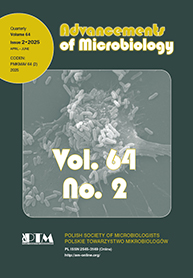Detailed recommendations
Nomenclature of organisms
The spelling of Bacteria and Archaea names should follow the list of Prokaryotic Names with Standing in Nomenclature (LPSN): http://www.bacterio.net
Binary names, consisting of a generic name and a specific epithet (e.g., Escherichia coli), should be used for all microorganisms. A species name must be preceded by a genus name, written out in full the first time it is used in a paper. After that, the genus name should be abbreviated to the initial capital letter (e.g., E. coli). Names of all bacterial taxa (kingdoms, phyla, classes, orders, families, genera, species, and subspecies) are printed in italics and should be italicized in the manuscript; strain designations and numbers are not. Common names should be in lowercase roman type (e.g., streptococci).
For names of fungi, the International Code of Nomenclature for Algae, Fungi, and Plants as a set of rules and recommendations should be set. https://www.iapt-taxon.org/nomen/main.php
Names of the viruses should be written according to the ICTV (International Committee on Taxonomy of Viruses) https://ictv.global. Common names and abbreviations, such as influenza virus, HIV, HPV, are written in a standard font.
Biochemical and Genetic Nomenclature
Proper names of enzymes and their EC numbers and biochemical compounds names should be used according to recommendations of the International Union of Biochemistry and Molecular Biology https://iubmb.qmul.ac.uk
Genetic nomenclature should essentially follow the recommendations of Demerec et al.: Genetics, 54, 61–76 (1966). In that style, genes are designated by a three-letter italicized symbol written in lower case letters, often suffixed with a capital letter, for example, sua, gapC, while their products are written with straight letters. There exist several databases for bacterial gene names. Detailed recommendations can be found in the newest issue of the ASM Journal of Bacteriology and Molecular and Cellular Biology https://journals.asm.org/nomenclature.
Reporting numerical data
The international metric units (SI) system should be used to report length, weight, and volume. But for these units and molarity, should be used the prefixes m, µ, n, and p for 10–3, 10–6, 10–9, and 10–12, respectively. The temperature should be given in Celsius degrees, e.g. 37°C. Use ‘l’ rather than ‘L’ to denote a liter, e.g. 5 mg/ml.
Italics
All Latin expressions such as in vivo, in silico, dermatitis etc. should be in italics.

